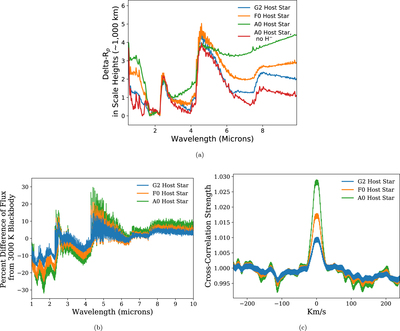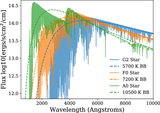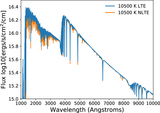Image Details

Caption: Figure 8.
Observational implications of host star irradiation. Panel (a) shows the transit spectrum in scale heights above the minimum near-IR transit radius of the Teq = 3000 K planet around different host star types. The ultra-hot Jupiters around hotter host stars have a muted transit spectrum due primarily to increased H− opacity in comparison to planets around cooler stars. Panel (b) shows the emission spectrum of the same planet in percent difference from a 3000 K blackbody. Planets around hotter host stars have larger spectral features due to the increased contrast in brightness temperature between pressures probed at these wavelengths. Panel (c) shows the result of cross-correlating the high-resolution emission spectrum of the same planet between 2.3 and 2.6 μm with a CO template binary mask, resulting in the mean CO line profile. Ultra-hot Jupiters around hotter stars have greater line-to-continuum contrasts compared to similar planets around cooler stars for the same reason the lower resolution emission spectrum has larger spectral features.
Copyright and Terms & Conditions
© 2019. The American Astronomical Society. All rights reserved.











